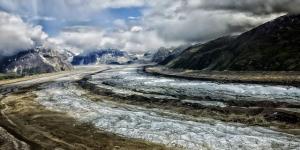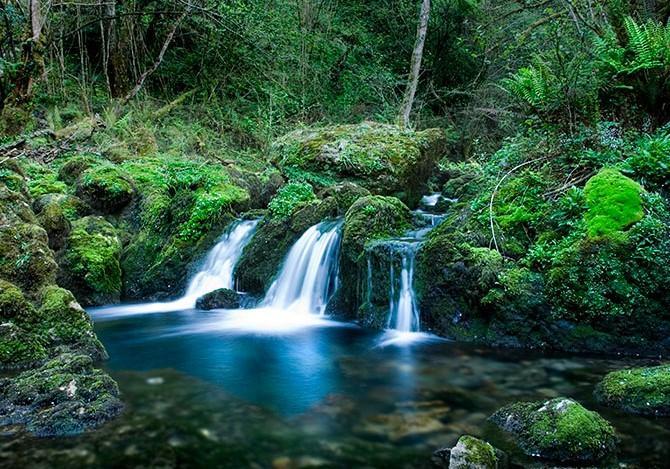What Is a Lotic Ecosystem?


Lotic ecosystems are freshwater ecosystems which have dynamic currents of water, as opposed to those bodies of water which are relatively stagnant. Aquatic ecosystems are defined by various factors, such as size or temperature with the level of salinity being a major determinant. Movement is a categorization of bodies of water which is not always considered. With lotic ecosystems, we can see how the flow of water can affect the plant and animal life within them. We an also see how they help to influence many other factors such as geography, land use and many more.
At thedailyECO, we ask what is a lotic ecosystem? We look at the characteristics and examples of lotic ecosystems in nature, paying specific attention to the difference between lotic and lentic ecosystems.
Types of aquatic ecosystems
Before we look at lentic ecosystems in more detail, we look at how the different types of aquatic ecosystems are classified. Bodies of water are categorized into the following two main groups:
Freshwater ecosystems
Freshwater ecosystems cover about 0.8% of the Earth's surface and provide habitat for organisms as diverse as reptiles, amphibians and more than 40% of fish species. These ecosystems contain very little or no salt. They can be grouped into the following:
- Rivers and streams (lotic, fast-moving ecosystems)
- Lakes
- Ponds
- Wetlands (lentic, slow-moving ecosystems)
We can learn more about freshwater ecosystems with our article explaining what is a river delta and how is it formed?
Saltwater ecosystems
Marine or saltwater ecosystems are the largest existing ecosystems. They cover more than 70% of the Earth's surface, containing about 97% of our existing water. They are home to disparate organisms, from corals and echinoderms to brown algae and dinoflagellates. These ecosystems are characterized by their high content of minerals and dissolved salts. Some of the types of saltwater ecosystems are:
- Oceans
- Estuaries
- Wetlands
- Hydrothermal vents
- Salt marshes
- Coral reefs
Not all aquatic ecosystems are easily categorized, especially since water salinity is determined by a sliding scale. Learn about one such category with our article explaining what is brackish water?
What are lotic ecosystems?
Lotic ecosystems are freshwater ecosystems which have a relatively strong current of water which flows in the same direction. They include any moving body of water such as rivers, streams, springs, canals and others. While this provides a broad definition of lotic ecosystems, we need to look at their specific characteristics to better understand how they function.
The characteristics of lotic ecosystems include the following:
- Minerality: the waters of lotic ecosystems carry dissolved minerals throughout them. These are from materials dissolved from the sediment load, usually from the chemical wear of the substrate.
- Turbidity: there is a degree of turbidity in lotic waters, referring to the level of clarity or opacity in the water. Highly turbid waters are clouded by the large amount of clay, mud, sand and other sediment. The movement of lotic waters is a direct contributor to this turbidity. In addition to physical particles of substrate, there microorganisms such as bacteria and even chemical precipitates present.
- Temperature: they have a longitudinal progression of temperature, meaning the temperature tends to increase along the path of the system. The smaller the river or stream, the greater the temperature variation and the faster the response to environmental temperature fluctuations. As the volume of water increases with the flow of the river or stream and becomes more constant, the range of temperature variation decreases.
- Gas levels: lotic ecosystems contain atmospheric gases, having a high concentration of oxygen, especially in areas of greater water movement and low temperatures. This is because the increasing water temperature means the amount of dissolved oxygen decreases.
- Biodiversity: generally, lotic ecosystems provide shelter to a great amount of biodiversity. These include insects, (e.g. mayflies or plecopterans), fish (e.g. trout or eels) or mammals (e.g. otters or beavers).
- Water speed: lotic ecosystems are characterized by having two types of zones, rapids and backwaters. Rapid zones are areas where water flows so quickly that it carries most of the sediment in solution or suspension. Backwater zones are deeper parts of the river where the speed of the water flow and transported sediment slows down. They tend to settle and accumulate in the bed at these points.
Examples of lotic ecosystems
We have already explained that lotic ecosystems are freshwater bodies of water which contain water flowing consistently in the same direction. Some of the most important examples of lotic ecosystems are the following:
Rivers and streams
The waters in rivers and streams is always flowing. This constant movement means that the plants and animals which inhabit them need to be adapted to this water movement. An example is the case of salmon, a type of fish which swims upstream against the currents of rivers to spawn. There is relatively little plat life on the substrate as the flowing current does not allow them much opportunity to take root.
Springs
Springs are the areas where groundwater emerges from an aquifer and becomes surface water. Spring water comes from aquifers or the groundwater table. It may have traveled long distances from its point of origin until it flows externally.
There are different types of springs and their waters can vary in quality. For examples, some are drinkable, but others are not. The amount of ions they contain depends on the course followed and the geological conditions of the aquifer from which the spring comes. Some spring waters are from cold waters and others can exceed 500ºC (932ºF). In addition, springs can be perennial and emerge seasonally or ephemeral and have intervals throughout the year in which they emerge erratically.
You can learn more about how groundwater is stored in various ecosystems by looking at our article explaining the different types of aquifers.

Difference between lentic and lotic ecosystems
By definition, lotic ecosystems exist in comparison to lentic ecosystems. As we have explained, this is to do with the movement of water within them. In this way, we can say the differences between lentic and lotic ecosystems are the following:
- Water movement: unlike lotic ecosystems, lentic ecosystems are those formed by stagnant waters. They include lakes, seas, ponds, ditches, seasonal ponds and swamps.
- Biodiversity: in lotic ecosystems, there are algae, floating plants, rooted plants, invertebrates such as crabs and shrimp, amphibians such as frogs, salamanders, and reptiles such as water snakes and alligators. In the case of stagnant lentic waters, they can support a wide variety of aquatic plants due in part to a greater level of light penetration into the water.
- Drought: unlike lotic ecosystems, during hotter periods of the year lentic ecosystems tend to resist these unfavorable conditions for longer. They take longer to dry completely, meaning the organisms that live in these systems can continue to do so despite the decrease in supplies.
- Strata: in lentic systems there are 3 strata, the epilimnion, metalimnion and hypolimnion. The epilimnion is the superficial layer of water which has the highest concentration of oxygen and light. These characteristics mean they can have a greater level of life. The metalimnion is the intermediate layer in which the temperature of the water begins to decrease. It is usually in this stratum where the thermocline is located. It continues to present numerous organisms, but less so than the epilimnion. The hypolimnion is the deepest area, which maintains the same temperature in winter since it takes longer to warm up, but also to cool down. The amount of light capable of penetrating the waters greatly decreases, meaning total darkness can occur. It is for this reason that in this last layer there are the least amount of living organisms. Lotic ecosystems do not contain these strata. They contain strata which include the surface layer, the water column beneath it, benthic zone on the substrate and the riparian zone. The last is the point of interface between the land and the flowing body of water.
- Temperature: another difference between both types of ecosystems is that lotic ecosystems tend to be more superficial than lentic ones. This causes temperature to be one of the most important abiotic factors for life in these systems. Water in lotic ecosystems freezes and thaws more quickly than deep waters in lentic ecosystems. Lotic ecosystems depend on precipitation, snowmelt and springs to keep water flowing. In times of drought, these surface systems dry out and this leads to the death of many organisms that live in them.
In this article we focus on what is a lotic ecosystem, but if you want to learn more in terms of comparison, you can find out what is a lentic ecosystem?
If you want to read similar articles to What Is a Lotic Ecosystem?, we recommend you visit our Ecosystems category.






